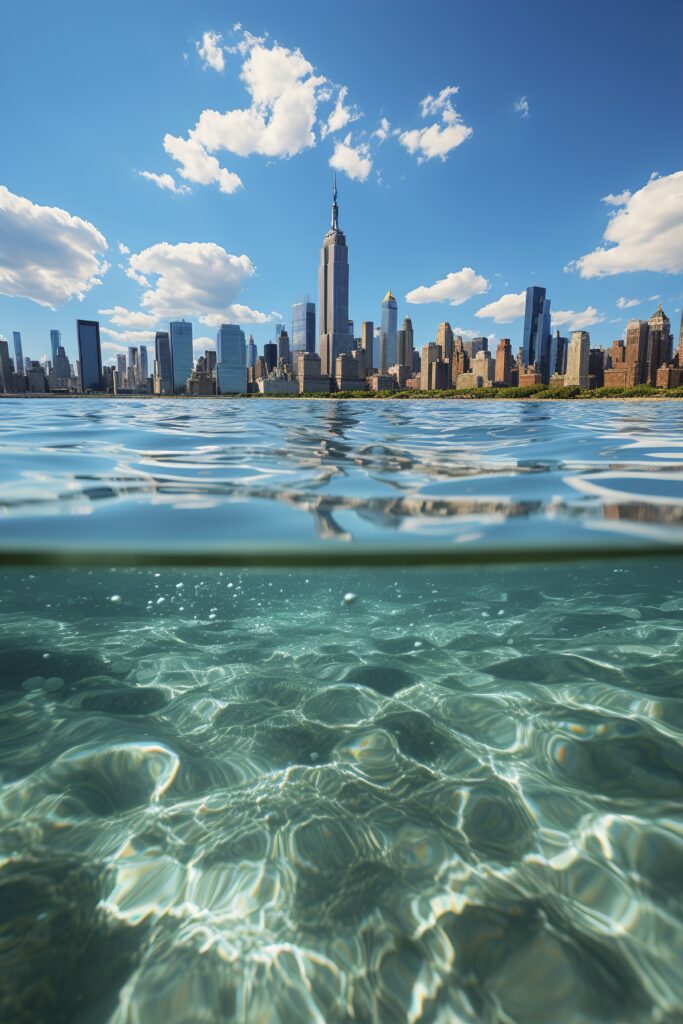Introduction: Rising Waters, Rising Solutions
As climate change accelerates and sea levels rise, coastal cities face an urgent dilemma: adapt or drown. From Jakarta to Miami, entire populations are threatened by encroaching tides. In response, architects and urban planners are exploring a once-futuristic solution that is rapidly becoming a viable alternative — floating cities. These buoyant urban environments are designed to float on water, offering resilience, sustainability, and adaptability in a world where land is no longer a guarantee.
Why Floating Cities?
Rising sea levels are not a distant threat — they are already affecting millions. Traditional flood defenses, like sea walls, are expensive and often temporary. Floating cities offer:
- Climate resilience: They adapt to water levels rather than resisting them.
- Land independence: They create new “land” without encroaching on scarce resources.
- Sustainable living: Integrated systems for energy, food, and waste can be designed from scratch.
- Global scalability: Suitable for densely populated coastal and island nations.
The Concept of Amphibious Urbanism
Floating cities are part of a broader architectural philosophy called amphibious urbanism, which focuses on designing for environments that are partially or fully submerged. This paradigm shift moves away from resisting nature to harmonizing with it. Key principles include:
- Flexibility and mobility
- Integration of water and land-based infrastructure
- Hybrid ecosystems that include marine life
Types of Floating Structures
There are various approaches to floating architecture, from single homes to full-scale cities. Some types include:
| Structure Type | Description |
|---|---|
| Floating Houses | Individual dwellings anchored to shorelines or piers |
| Floating Piers | Walkable public spaces like plazas or parks on water |
| Modular Platforms | Interconnected units forming neighborhoods or districts |
| Floating Skyscrapers | High-density vertical structures anchored below the water surface |
| Artificial Islands | Larger man-made landforms designed for long-term habitation |
Leading Examples from Around the World
Several projects demonstrate the viability of floating cities:
- Oceanix Busan (South Korea): Backed by the UN, this pilot city will house 12,000 residents across interconnected floating platforms, using renewable energy and closed-loop systems.
- Floating Pavilion (Netherlands): A climate-resilient building in Rotterdam designed to test floating urban technologies.
- The Maldives Floating City: A city of 5,000 homes built atop a network of floating hexagonal platforms.
- Blue21 (Netherlands): An architecture firm pioneering floating offices and communities with a focus on circular economies.
- Lilypad (Concept): A self-sufficient amphibious city designed by Vincent Callebaut, meant to house climate refugees.
More on INJ Architects:
Architectural Challenges
Floating cities present a unique set of challenges:
- Buoyancy and Stability: Ensuring platforms stay level and secure in various water conditions.
- Anchoring Systems: Floating structures must be tethered to the seabed or designed to drift minimally.
- Infrastructure: Water supply, electricity, internet, and sewage must function independently or connect innovatively with existing systems.
- Environmental Impact: Designs must protect marine ecosystems and avoid polluting water bodies.
- Legal and Zoning Issues: Maritime law often lacks clarity for permanent floating habitats.
Materials and Technologies Used
Floating architecture utilizes cutting-edge materials and engineering methods:
- Concrete pontoons: For buoyant and durable bases.
- Recycled plastics: Used in decking and structural components.
- Marine-grade steel: Resists corrosion and ensures longevity.
- Solar panels & wind turbines: Integrated into building skins for self-sufficiency.
- Smart monitoring systems: For weather, tides, and structural integrity.
Designing for Community and Livability
Floating cities are not just technological feats — they must be livable, equitable, and inspiring. Planners focus on:
- Public spaces: Floating parks, plazas, and schools.
- Walkability: Prioritizing pedestrian movement over boats or vehicles.
- Biodiversity: Artificial reefs and floating gardens.
- Cultural integration: Reflecting local traditions in design.
- Resilience planning: Evacuation routes, emergency services, and food production zones.
Sustainability and Environmental Impact
Floating cities can become eco-positive rather than eco-neutral by:
- Generating more energy than they use
- Cleaning surrounding water through aquatic vegetation
- Harvesting rainwater and desalinating seawater
- Composting organic waste on-site
- Growing food on floating farms or vertical hydroponic systems
The Economics of Floating Cities
Building on water may seem expensive, but when balanced against the cost of relocating cities or dealing with natural disasters, it becomes a strategic investment. Economic factors include:
- Initial development costs vs. long-term savings from climate resilience
- Job creation in marine engineering, aquaculture, and construction
- Attractiveness for tourism and innovation hubs
- Potential for private-public partnerships and UN involvement

Cultural and Psychological Considerations
Floating cities must also address the human experience:
- Design for mental health: Natural views, access to green and blue spaces.
- Noise and motion: Minimized through engineering and layout.
- Cultural preservation: Incorporating familiar architecture and local crafts.
- Inclusivity: Ensuring affordability and accessibility for all residents.
What the Future Holds
The idea of entire cities floating on water may still sound like science fiction, but with the right technologies, policies, and public support, they could redefine how we live. By 2050, we may see:
- Permanent ocean-based districts near major coastal cities
- Floating climate-refugee communities in the Pacific
- International water-based research cities
- Hybrid land-sea economies
- Floating education or medical campuses deployed in crisis zones
